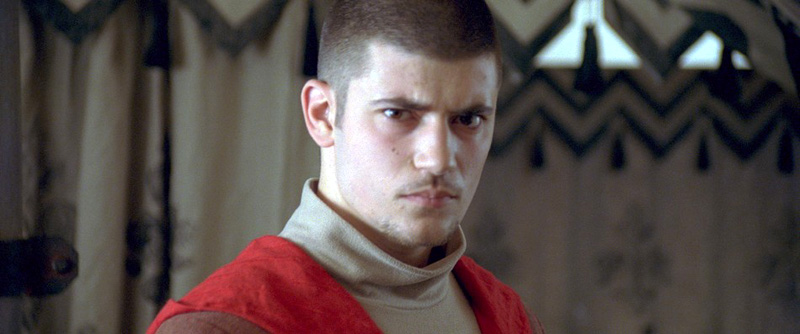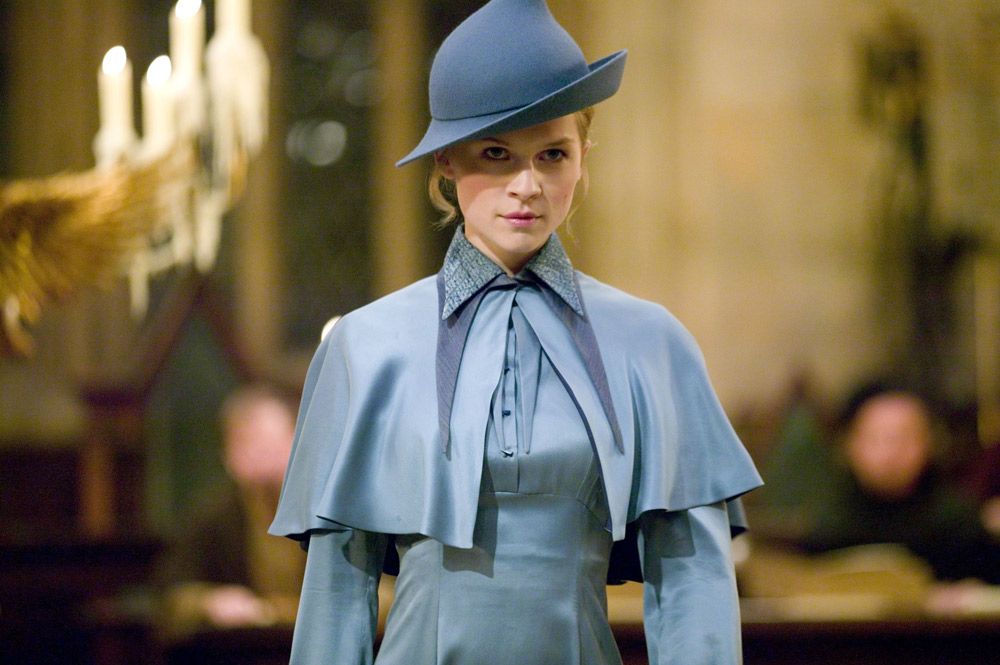Why did “Goblet of Fire” depict the other wizarding schools as single-gender institutions?
Naturally, thousands of variations exist between the Harry Potter novels and their film adaptations. The films span an aggregate runtime of over 19 hours, but the books total over 4,000 pages of literature. Countless minor details were forced to be left out or modified, else the series’ young actors would have been playing teenagers until age 40.
That said, the filmmakers also made certain changes to literary material that don’t have an implicit reason. One in particular is the presentation of wizarding schools Durmstrang and Beauxbatons in Harry Potter and the Goblet of Fire (2005) as non-coed institutions. Both schools arrive at Hogwarts to participate in the Tri-Wizard Tournament, and their introductions to Hogwarts’ student body presents them with an explicitly heavy gender imbalance.
Durmstrang is a rigid institution known for teaching the dark arts, which does not admit Muggle-borns, and which is usually cited as hailing from somewhere around Bulgaria. However, Dumbledore (Michael Gambon) introduces them as “our friends from the north,” implying their origin may be more akin to Norway, as Bulgaria is not north of England. Durmstrang students have no frivolities and are described as lacking even fires for warmth at their school. Seemingly evolved from Germanic language, “drum” and “strang” are both German words that have masculine, aggressive implications. The student body enters Hogwarts’ Great Hall dressed in furs and sable hats, stomping sticks, chanting, performing feats of physical endurance, and blowing fire. Their headmaster, Igor Karkaroff (Pedrag Bjelic), is a former Death Eater and an imposing male figure with bad teeth and a heavy stride. The students travel to Hogwarts via a large Viking-style boat which sails underwater.
In direct contrast to Durmstrang, Beauxbatons is introduced as an entirely female group. Their school is said to be a palace made of wood, with statues and nymphs and abundant beauty. The student body is dressed in light blue fabrics and flutters through the Great Hall upon entering Hogwarts, accompanied by gentle sighs of sweetness. A French school, their name literally translates to “beautiful sticks” (or perhaps, in the environment of Harry Potter, “beautiful wands”), referring to the trim and gorgeous makeup of its student body . Their headmistress, Madame Maxine (Frances de la Tour), is a half-giant who wears furs and moves with elegance despite her stature. They travel to Hogwarts in an elegant carriage drawn by palomino horses.

Viktor Krum (Stanislav Ianevski), a renowned Quidditch player, and Fleur Delacour (Clémence Poésy) are the two emblematic representatives of each school. Both are stereotypes within the overall image of their organizations: Viktor Krum is rough, big, and physical, while Fleur Delacour (loosely “delicate flower”) immediately captures the lust of every male at Hogwarts. (The film fails to directly acknowledge Fleur is half-human, half-Veela, a siren-like race capable of bringing men to their knees, though it’s still clear through the response others have to her presence.)

In the novels, J.K. Rowling did feminize/masculinize the institutions, but they are not strictly non-coed. A few excerpts from the book proves this:
“Harry, whose attention had been focused completely upon Madame Maxime, now noticed that about a dozen boys and girls, all, by the look of them, in their late teens, had emerged from the carriage and were now standing behind Madame Maxime.”
“The Durmstrang students were staring curiously at Harry too. Out of the corner of his eye, Harry saw comprehension dawn on a few of their faces. The boy with food all down his front nudged the girl next to him and pointed openly at Harry’s forehead.”
“Fine,” snapped Padma, and she got up and went to join Parvati and the Beauxbatons boy, who conjured up one of his friends to join them so fast that Harry could have sworn he had zoomed him there by a Summoning Charm.
So why did the filmmakers decide to depict Durmstrang as an all-boys school and Beauxbatons as all-girls? It may be as simple as visual contrast - the entrance performances of each school when they enter Hogwarts are intense and defining. In 30 seconds, each school effectively tells us everything we need to know about its attitudes, its regimens, its education, and its priorities. Throwing a few girls or boys in the background of each student body may confuse the intensity of the presentation and potentially render it less effective. We get a clear picture of beauty, elegance, rigidity, and malevolence from their appearances.
The books also fail to truly flesh out any remarkable characters from either school beyond Krum and Delacour. Even if other characters from Beauxbatons and Durmstrang existed in meaningful form, the film wouldn’t have time to explore them. As such, it was easy for the filmmakers to take creative liberty in gendering each school to simply reflect its most notable characters. Since the gender-bias of each institution is established by the literature despite their canonically coed nature, it isn’t much of a stretch to simplify their identities on-screen.

